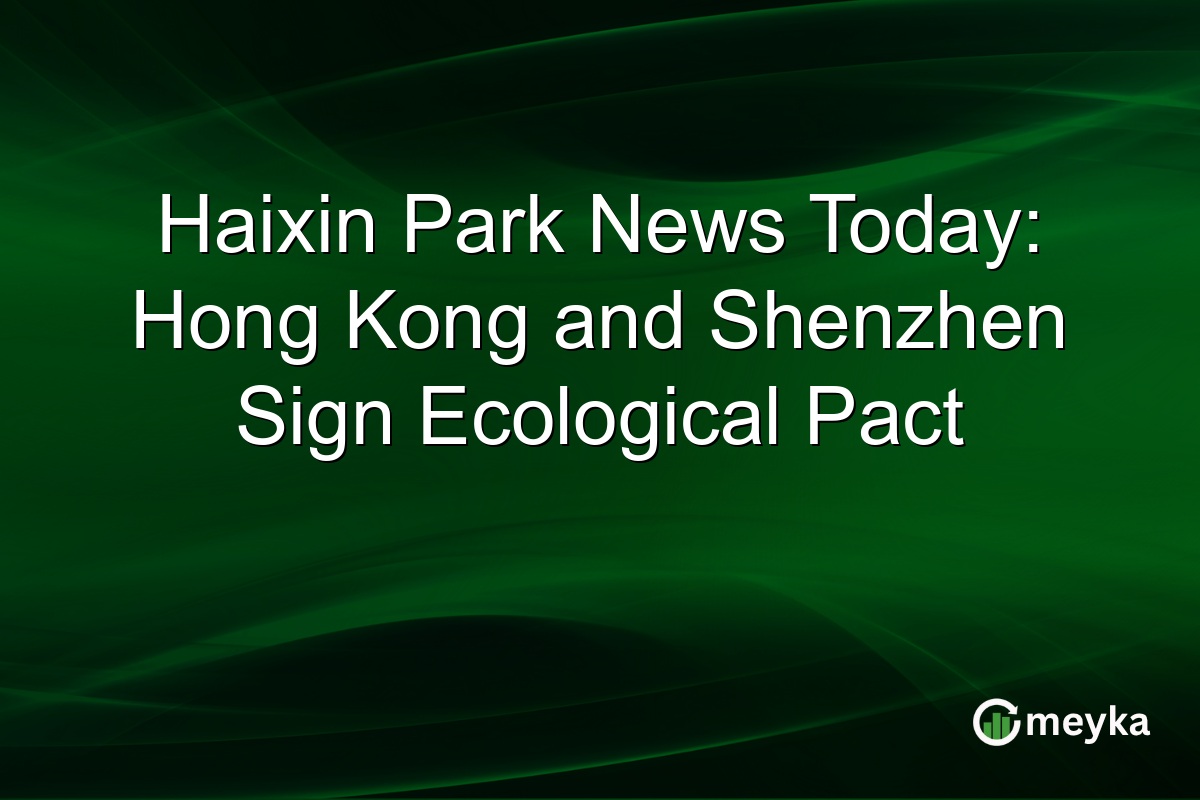Haixin Park News Today: Hong Kong and Shenzhen Sign Ecological Pact
Hong Kong and Shenzhen have made a significant move by signing an ecological conservation agreement, emphasizing the importance of Haixin Park. This collaboration seeks to enhance efforts in combating climate change and preserving biodiversity. In a rapidly urbanizing region, this pact represents a strategic commitment to sustainable development, highlighting the critical role of cross-border cooperation.
Enhancing Hong Kong and Shenzhen Cooperation
The signing of the ecological conservation agreement marks a new chapter in Hong Kong and Shenzhen’s bilateral relationship. This pact underscores the growing priority of environmental sustainability in the region’s development. The agreement focuses on Haixin Park, a pivotal area for ecological efforts. By boosting cross-border cooperation, the two cities aim to set an example for other urban centers facing similar challenges. The emphasis on Haixin Park demonstrates a shared dedication to ecological health and highlights investment in green infrastructure. This shows the strategic importance of regional partners working together to tackle environmental issues efficiently.
Focus on Climate Change and Biodiversity
The ecological pact between Hong Kong and Shenzhen seeks to mitigate climate change effects and ensure biodiversity preservation. According to recent studies, the region faces significant climate risks if current trends continue. Projects like Haixin Park are at the forefront of this initiative, serving as key areas for biodiversity. This agreement includes joint projects, research initiatives, and the exchange of ecological data. By addressing these challenges collaboratively, the agreement paves the way for effective climate actions. Enhancing biodiversity within Haixin Park not only supports local wildlife but also strengthens the ecosystem services vital for urban resilience.
Legal and Governmental Framework
The ecological pact establishes a comprehensive framework to guide conservation efforts. Legal measures are paramount in ensuring that environmental goals are met. The agreement incorporates stringent enforcement mechanisms, ensuring compliance with conservation regulations. It involves governmental agencies from both cities actively participating in the planning and implementation processes. This cooperative approach fosters transparency and accountability. By leveraging legal frameworks, the collaboration can more effectively drive ecological projects and policies forward. The focus on legal accountability ensures that the objectives of the pact are not just aspirational but achievable through structured governance. Read more about government measures.
Final Thoughts
The ecological pact between Hong Kong and Shenzhen serves as a model for urban areas worldwide. By focusing on Haixin Park, both cities show that cooperative efforts can lead to meaningful environmental progress. As climate change challenges intensify, such agreements highlight the importance of collaboration over competition. In the coming years, the effectiveness of this pact will depend on sustained government support, public involvement, and the continuous exchange of knowledge. The commitment from Hong Kong and Shenzhen stands as a beacon for ecological preservation in urban planning. This pact not only marks a step forward but also creates a foundation for future conservation strategies.
FAQs
The focus is on improving cooperation between Hong Kong and Shenzhen to address climate change and preserve biodiversity, with Haixin Park being a central area for these efforts.
The pact enhances biodiversity by prioritizing projects that support local wildlife habitats and strengthening ecosystem services, crucial for maintaining ecological balance in urban areas.
Legal measures ensure that the conservation goals are effectively met, with stringent enforcement mechanisms and governmental involvement driving compliance and accountability.
Disclaimer:
This is for information only, not financial advice. Always do your research.






